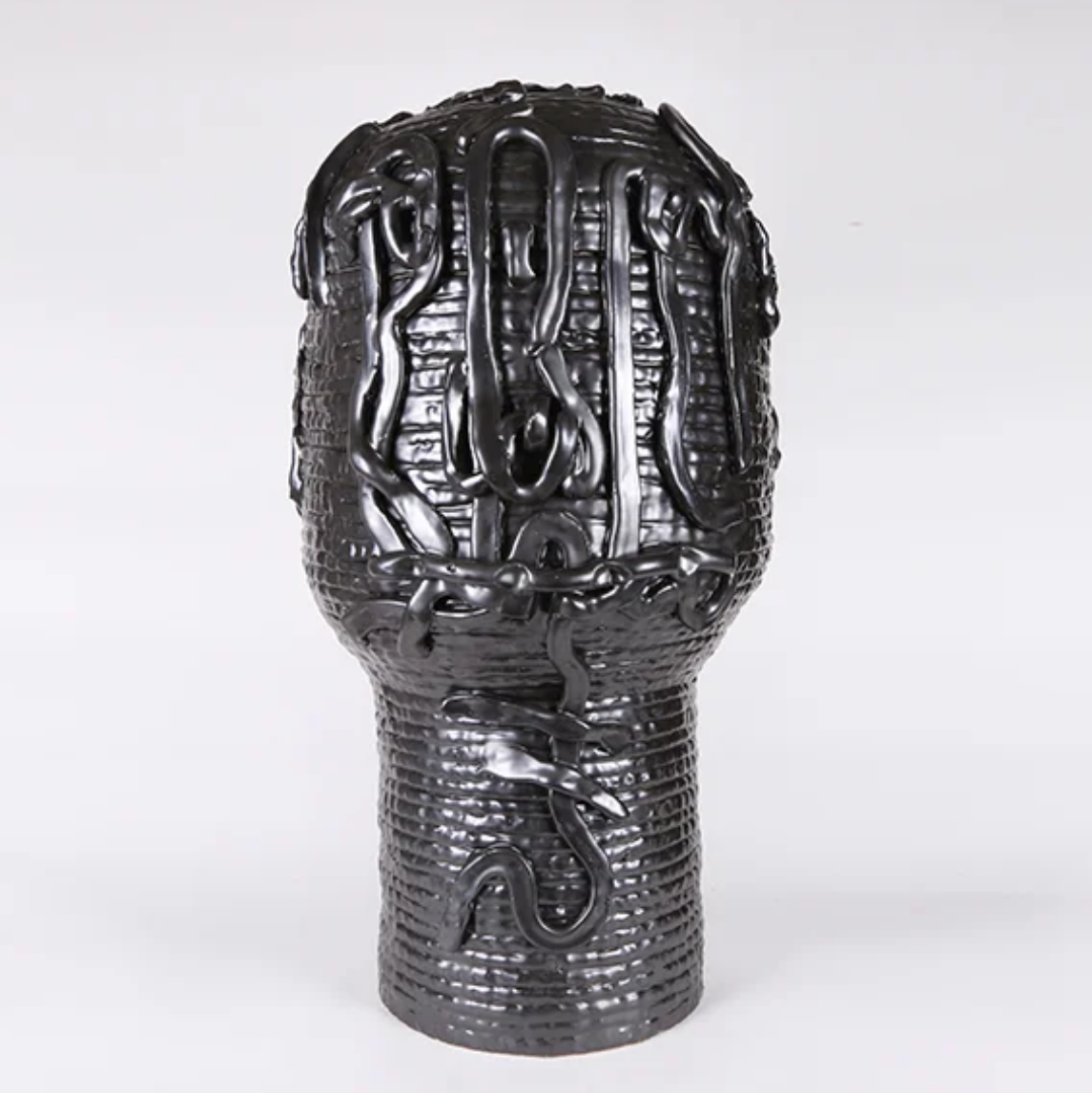In 2020, New York gallery Freidman Benda initiated an international series of online interviews, Design in Dialogue, with leading voices in the creative field. The conversational program held virtually on zoom is hosted alternately by curator and historian Glenn Adamson and designer Stephen Burks that engages with designers, makers, critics, and curators as they reflect on their careers and creative processes against the backdrop of the pandemic and global lockdowns.
On June 30, 2021, Design in Dialogue welcomed Detroit-based ceramicist, sculptor and designer Ebitenyefa Baralaye whose glazed stoneware portraits were on view as part of the gallery’s annual participation at Design Miami/2021 and a commanding presence. His work explores cultural, spiritual, and material translations of form/objects, text, and symbols, interpreted through a diaspora lens and abstracted around the aesthetics of craft and design. ‘I have been thinking about the encoded nature of faces,’ Baralaye says,‘the way facial features represent not just one person, but a community, a society, and a culture.’

Design Miami 2021

2021, stoneware and slip
33 x 18 x 18 inches
courtesy of Friedman Benda and Ebitenyefa Baralaye

2021, stoneware and slip
33 x 18 x 18 inches
courtesy of Friedman Benda and Ebitenyefa Baralaye

2021, stoneware and slip
33 x 18 x 18 inches
courtesy of Friedman Benda and Ebitenyefa Baralaye

2021, stoneware and slip
33 x 18 x 18 inches
courtesy of Friedman Benda and Ebitenyefa Baralaye
The large busts feature characteristics that have been rendered in a free-flowing, abstracted clay line. the body of work acts as a vehicle through which to offer reflections on Baralaye’s experience of being a black man in America, while traversing universal realities of the collective diaspora, in particular struggles with mental health and well-being.
Born in Nigeria in 1984, Ebitenyefa Baralaye spent his early childhood in Antigua and is now based in Detroit, where he is currently an assistant professor and section head of ceramics at the College for Creative Studies. His work was also included in the group exhibition, A New Realism, curated by Glenn Adamson at Friedman Benda, New York, in the summer of 2021.

Exhibition View

2021, stoneware and slip
33 x 18 x 18 inches
courtesy of Friedman Benda and Ebitenyefa Baralaye

2021, stoneware and slip
31 x 18 x 18 inches
courtesy of
Friedman Benda and Ebitenyefa Baralaye


2021, stoneware, slip
31.5 x 15 x 21 inches
Ebitenyefa Baralaye
Writing about Baralaye’s most recent body of work – the tall, anthropomorphic vessels – in the exhibition catalogue essay, Adamson notes:
“There is a clear reference, in these works, to the typology of the African-American face jug, which dates back to the mid-19th Century; it was likely derived originally from ritual figures and containers made among the Kongo peoples of central Africa, forcibly brought to America. with this allusion comes a huge weight: enslavement and its attendant tragedies of suffering and erasure. Baralaye is facing up to this history. but he is also looking outward, and forward.”
“These objects, then, are portraits on multiple registers simultaneously—of the self, of family, of the black community at large. ultimately, they address the very notion of identity formation, which may be specific (he acknowledges a correlation between his use of dark, iron-rich terracotta and the black body) but is also transcendent, a shared human experience, beyond racial and cultural difference. We have become more aware of collective consciousness than we were previously.”

Add your valued opinion to this post.